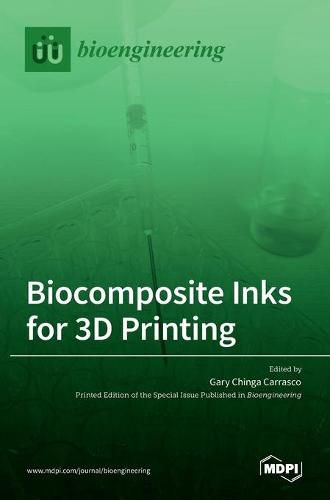Readings Newsletter
Become a Readings Member to make your shopping experience even easier.
Sign in or sign up for free!
You’re not far away from qualifying for FREE standard shipping within Australia
You’ve qualified for FREE standard shipping within Australia
The cart is loading…






This title is printed to order. This book may have been self-published. If so, we cannot guarantee the quality of the content. In the main most books will have gone through the editing process however some may not. We therefore suggest that you be aware of this before ordering this book. If in doubt check either the author or publisher’s details as we are unable to accept any returns unless they are faulty. Please contact us if you have any questions.
Three-dimensional (3D) printing has evolved massively during the last years. The 3D printing technologies offer various advantages, including: i) tailor-made design, ii) rapid prototyping, and iii) manufacturing of complex structures. Importantly, 3D printing is currently finding its potential in tissue engineering, wound dressings, tissue models for drug testing, prosthesis, and biosensors, to name a few. One important factor is the optimized composition of inks that can facilitate the deposition of cells, fabrication of vascularized tissue and the structuring of complex constructs that are similar to functional organs. Biocomposite inks can include synthetic and natural polymers, such as poly ( -caprolactone), polylactic acid, collagen, hyaluronic acid, alginate, nanocellulose, and may be complemented with cross-linkers to stabilize the constructs and with bioactive molecules to add functionality. Inks that contain living cells are referred to as bioinks and the process as 3D bioprinting. Some of the key aspects of the formulation of bioinks are, e.g., the tailoring of mechanical properties, biocompatibility and the rheological behavior of the ink which may affect the cell viability, proliferation, and cell differentiation.
$9.00 standard shipping within Australia
FREE standard shipping within Australia for orders over $100.00
Express & International shipping calculated at checkout
This title is printed to order. This book may have been self-published. If so, we cannot guarantee the quality of the content. In the main most books will have gone through the editing process however some may not. We therefore suggest that you be aware of this before ordering this book. If in doubt check either the author or publisher’s details as we are unable to accept any returns unless they are faulty. Please contact us if you have any questions.
Three-dimensional (3D) printing has evolved massively during the last years. The 3D printing technologies offer various advantages, including: i) tailor-made design, ii) rapid prototyping, and iii) manufacturing of complex structures. Importantly, 3D printing is currently finding its potential in tissue engineering, wound dressings, tissue models for drug testing, prosthesis, and biosensors, to name a few. One important factor is the optimized composition of inks that can facilitate the deposition of cells, fabrication of vascularized tissue and the structuring of complex constructs that are similar to functional organs. Biocomposite inks can include synthetic and natural polymers, such as poly ( -caprolactone), polylactic acid, collagen, hyaluronic acid, alginate, nanocellulose, and may be complemented with cross-linkers to stabilize the constructs and with bioactive molecules to add functionality. Inks that contain living cells are referred to as bioinks and the process as 3D bioprinting. Some of the key aspects of the formulation of bioinks are, e.g., the tailoring of mechanical properties, biocompatibility and the rheological behavior of the ink which may affect the cell viability, proliferation, and cell differentiation.